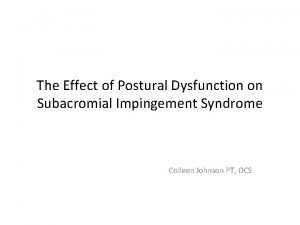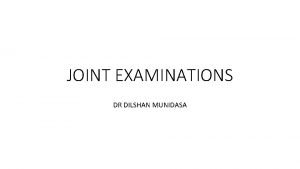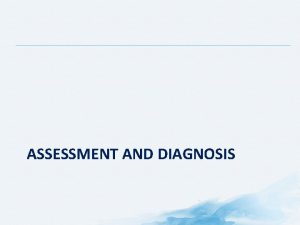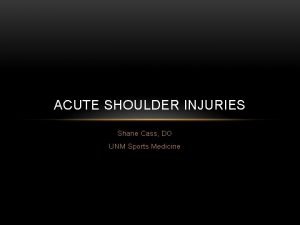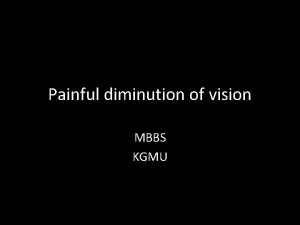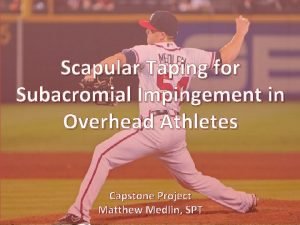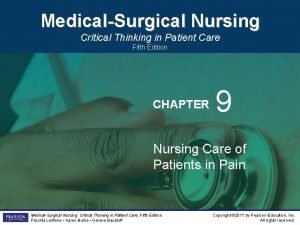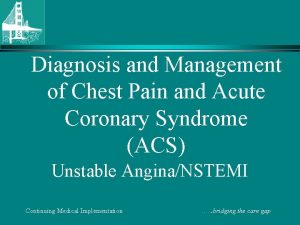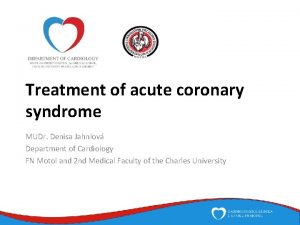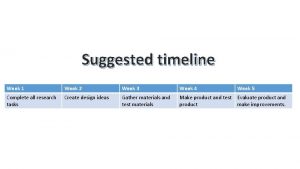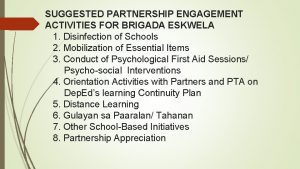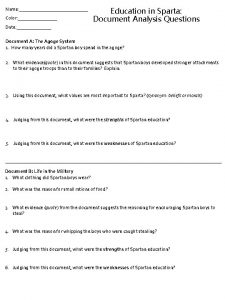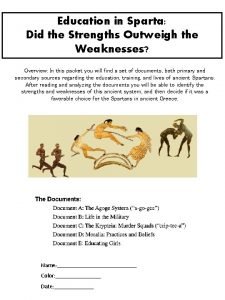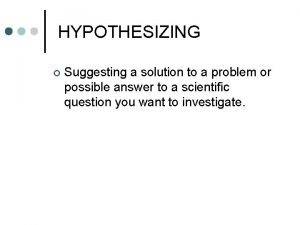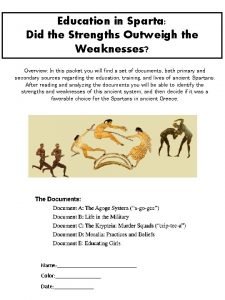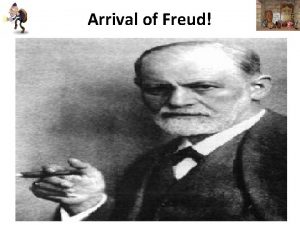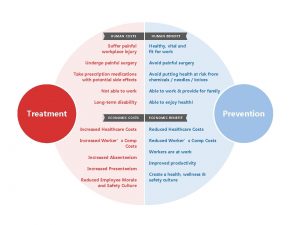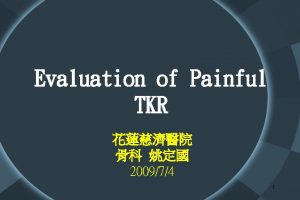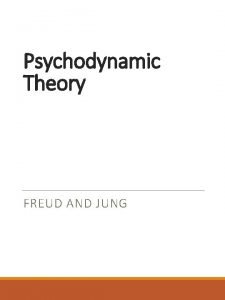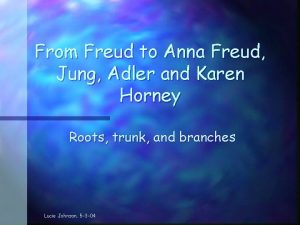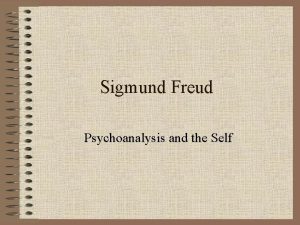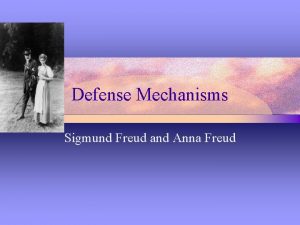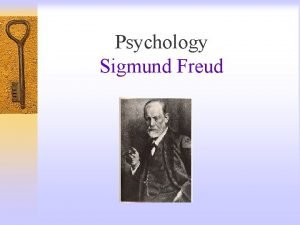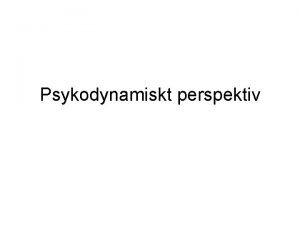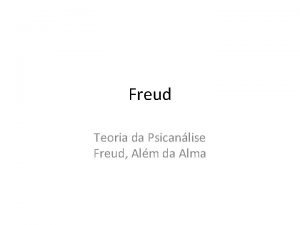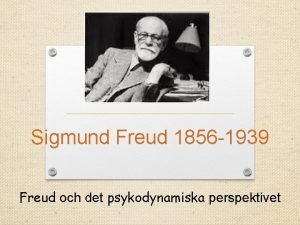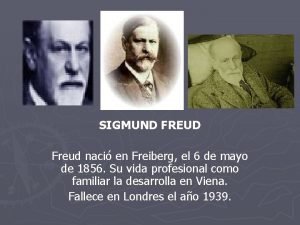Freud suggested that we repress our painful and




































- Slides: 36


Freud suggested that we repress our painful and intolerable ideas, feelings, and thoughts, resulting in anxiety. 2

• • • Generalized Anxiety Panic Disorder Phobias Obsessive-Compulsive Disorder (OCD) Post-Traumatic Stress Disorder (PTSD)

� Anxiety Disorders: psychological disorders characterized by distressing persistent anxiety or maladaptive behaviours that reduce anxiety. � All anxiety disorders share: �Fear �Worry �SYMPATHETIC NERVOUS SYSTEM RESPONSE

• Generalized Anxiety Disorder: an anxiety disorder marked by chronic excessive anxiety and worry that is difficult to control

DSM- 5 G. A. D. A. Excessive anxiety and worry for at least 6 months, about a number of events or activities (such as work or school performance). B. difficult to control the worry. C. The anxiety and worry are associated with three (or more) of the following six symptoms 1. Restlessness, feeling keyed up or on edge. 2. Being easily fatigued. 3. Difficulty concentrating or mind going blank. 4. Irritability. 5. Muscle tension. 6. Sleep disturbance D. The symptoms cause clinically significant distress or dysfunction E. The disturbance is not attributable to the physiological effects of a substance (e. g. , a drug of abuse, a medication) or another medical condition (e. g. , hyperthyroidism). F. The disturbance is not better explained by another medical disorder

� Mild heart palpitations � Dizziness � Excessive worry �Most common: Money, health, safety, responsibilities � Not related to a specific event (PTSD) � Not as sever as panic disorder

PANIC DISORDER • Panic Disorder: minute-long episode of intense dread in which a person experiences an extreme sympathetic nervous system response. � Expected v. unexpected panic attacks � Expected: associated with a specific fear like that of flying. � Unexpected: have no apparent trigger or cue, and may appear to occur out of the blue.

SYMPTOMS � A panic attack is defined as the abrupt onset of intense fear that reaches a peak within a few minutes and includes at least four of the following symptoms: � � � � a feeling of imminent danger or doom the need to escape heart palpitations sweating trembling shortness of breath or a smothering feeling a feeling of choking chest pain or discomfort nausea or abdominal discomfort dizziness or lightheadedness a sense of things being unreal, depersonalization a fear of losing control or "going crazy" a fear of dying tingling sensation chills or heat flush

PANIC DISORDER � Sudden attack of intense fear or anxiety � Dizziness � Heart palpitations � Blurred vision � Shortness of breath


• • Phobia: an irrational fear of a specific object or situation Social phobia: an intense fear of being scrutinized by others. Avoidance of potentially embarrassing social situations. Two types: - general social phobia - performance anxiety

� Claustrophobia- An abnormal and persistent fear of closed spaces, Agoraphobia- fear of being in places where it may be difficult or embarrassing to get out of quickly

PHOBIA �A persistent irrational fear of an object, situation, or activity that the person feels compelled to avoid �Sesquipedalophobia- Fear of long words �Koumpoundophobia- Fear of buttons �Hypnophobia- Fear of sleep �Kathisophobia- Fear of sitting down �Pogonophobia- Fear of beards �Nephophobia : fear of clouds

Investigators believe that fear responses are inculcated through observational learning. Young monkeys develop fear when they watch other monkeys who are afraid of snakes. 16

Natural Selection has led our ancestors to learn to fear snakes, spiders, and other animals. Therefore, fear preserves the species. Twin studies suggest that our genes may be partly responsible for developing fears and anxiety. Twins are more likely to share phobias. 17

� Motivation � Theories of Motivation � Hunger Stressed Out � Losing touch w/Reality � Work � All during class tomorrow � Sex � Emotion � Theories of Emotion � Expressed Emotion � Experienced Emotion � Retake � Personality Trait Theory � � Practice with disorders Big Five Psychoanalytic theory � Defense Mechanisms Neo Freudians

Antianxiety drugs (Xanax , Ativan, Klonopin, Valium) depress the central nervous system and reduce anxiety and tension by elevating the levels of the Gammaaminobutyric acid (GABA) neurotransmitter. 25

OBSESSIVE-COMPULSIVE DISORDER OCD: a person who is troubled by repetitive thoughts or actions. • Meaningless rituals or repetitive actions. •

DSM OCD: CLASSIFIED AS ANXIETY DISORDER � According to the DSM, one would know that a patient had OCD if they �Have recurrent, unwanted thoughts (obsessions) �They are aware of these thoughts �They try to block these thoughts �They perform routine rituals in order to relieve the stress caused by the obsessive thoughts (compulsions)

SYMPTOMS � Obsessions- repetitive thoughts �Concern with dirt, germs, or toxins �Something terrible is going to happen (fire, death) �Symmetry, order, or exactness � Compulsions�Excessive repetitive behaviors hand washing, bathing, tooth brushing �Repeating rituals �Checking doors, locks, appliances


� Most common �Washing/cleaning �Counting �Hoarding �Checking �Repeated actions �Making lists

CAUSES � Imbalance � Misfiring of serotonin of neurotransmitters in synaptic clefts � Genetics � In some rare cases, strep throat has been correlated with OCD � Behavior learned in childhood

Antidepressant drugs like Prozac, Zoloft, and Paxil are Selective Serotonin Reuptake Inhibitors (SSRIs) that improve the mood by elevating levels of serotonin by inhibiting reuptake. 32

Anterior Cingulate Cortex of an OCD patient. 33 S. Ursu, V. A. Stenger, M. K. Shear, M. R. Jones, & C. S. Carter (2003). Overactive action monitoring in obsessive-compulsive disorder. Psychological Science, 14, 347 -353. Generalized anxiety, panic attacks, and even OCD are linked with brain circuits like the anterior cingulate cortex.

�A 30 year old father of two suffers from OCD � He lives in constant fear that appliances in his house that could potentially start a fire, are always turned on � Even after he turns them off he must repeat the words “its off. Its off” many times to feel safe � He fears that he will be responsible for a mistake that will effect loved ones and friends

� http: //www. youtube. com/watch? v=t. PFQMRx 2 l 3 Y � This goes in depth of a common ritual of OCD patients- germs and contamination

• PTSD: re-experiencing the trauma through nightmares and obsessive thoughts. • Avoid situations which are similar or remind the person of the experience. • Examples: explosions, war, earthquakes, plane crashes, fire

� Two criteria � 1 – Experience with an event that actually threatened death or intense injury; Response to event included fear/horror � 2. Patient will try to avoid situations, events, places or people that may trigger memories of trauma

Four or more weeks of the following symptoms constitute post-traumatic stress disorder (PTSD): 1. Haunting memories 2. Nightmares 3. Social withdrawal Bettmann/ Corbis 4. Jumpy anxiety 5. Sleep problems 38

� Difficulty falling or staying asleep � Irritability or outbursts of anger � Difficulty concentrating � Hypervigilance � Exaggerated startle response 39

Link 1 Link 2 Holocaust 40

EYE MOVEMENT DESENSITIZATION AND REPROCESSING (EMDR) In EMDR therapy, therapist attempts to unlock and reprocess previous frozen traumatic memories by waving a finger in front of the eyes of the client. EMDR has not held up under scientific testing. 41

Only about 10% of women and 20% of men react to traumatic situations and develop PTSD. Holocaust survivors show remarkable resilience against traumatic situations. All major religions of the world suggest that surviving a trauma leads to the growth of an individual. 42

Efforts to avoid thoughts, feelings, or conversations associated with the trauma � Efforts to avoid activities, places, or people that arouse recollections of the trauma � Inability to recall an important aspect of the trauma � Significantly diminished interest or participation in significant activities � � Feeling of detachment or estrangement from others � Restricted range of affect � Sense of a foreshortened future 43
 Phân độ lown ngoại tâm thu
Phân độ lown ngoại tâm thu Block nhĩ thất độ 2 mobitz 2
Block nhĩ thất độ 2 mobitz 2 Thơ thất ngôn tứ tuyệt đường luật
Thơ thất ngôn tứ tuyệt đường luật Thơ thất ngôn tứ tuyệt đường luật
Thơ thất ngôn tứ tuyệt đường luật Walmart thất bại ở nhật
Walmart thất bại ở nhật Tìm độ lớn thật của tam giác abc
Tìm độ lớn thật của tam giác abc Hãy nói thật ít để làm được nhiều
Hãy nói thật ít để làm được nhiều Tôn thất thuyết là ai
Tôn thất thuyết là ai Gây tê cơ vuông thắt lưng
Gây tê cơ vuông thắt lưng Sau thất bại ở hồ điển triệt
Sau thất bại ở hồ điển triệt Subacromial bursa
Subacromial bursa Dr dilshan munidasa
Dr dilshan munidasa What thought haunted brian and caused him to panic?
What thought haunted brian and caused him to panic? Painful neuropathy
Painful neuropathy Painful arc test
Painful arc test A very bright mildly painful light
A very bright mildly painful light Painful diminution of vision
Painful diminution of vision Scapular movements
Scapular movements Where is kidney pain felt diagram
Where is kidney pain felt diagram Painful lbbb
Painful lbbb Painful lbbb
Painful lbbb Painful lbbb
Painful lbbb How does rentals affect filipino entrepreneurs?
How does rentals affect filipino entrepreneurs? Awareness of ourselves and our environment is:
Awareness of ourselves and our environment is: Our awareness of ourselves and our environment.
Our awareness of ourselves and our environment. Our awareness of ourselves and our environment
Our awareness of ourselves and our environment Our awareness of ourselves and our environment
Our awareness of ourselves and our environment Suggested upper merged ontology
Suggested upper merged ontology Suggested timeline
Suggested timeline Brigada eskwela partnership engagement activities
Brigada eskwela partnership engagement activities What spartan values are suggested by this document?
What spartan values are suggested by this document? Nina and the baby sparrows worksheet
Nina and the baby sparrows worksheet Did the strengths outweigh the weaknesses in sparta
Did the strengths outweigh the weaknesses in sparta What did nina tell her mother about the baby sparrows
What did nina tell her mother about the baby sparrows A suggested solution to a problem or question
A suggested solution to a problem or question Reported speech order
Reported speech order What spartan values are suggested by this document
What spartan values are suggested by this document










